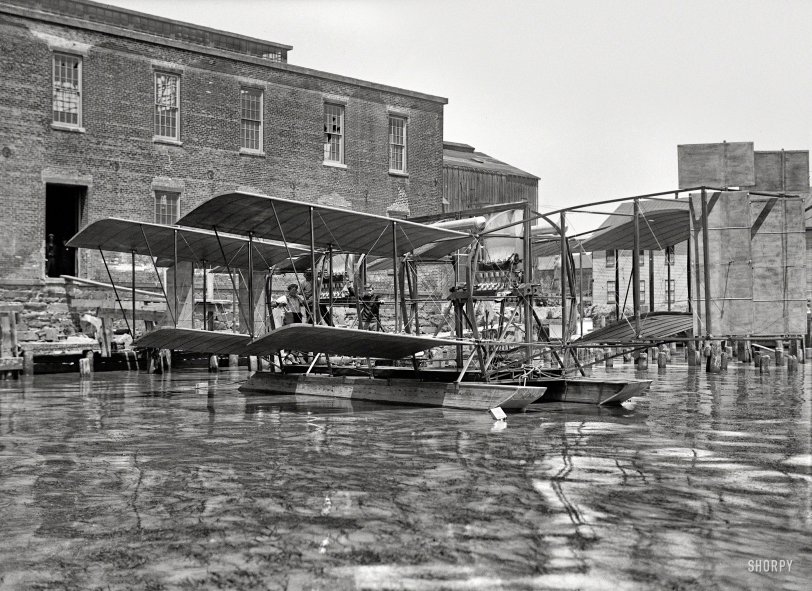


Framed or unframed, desk size to sofa size, printed by us in Arizona and Alabama since 2007. Explore now.
Shorpy is funded by you. Patreon contributors get an ad-free experience.
Learn more.

- Icing Platform?
- Indiana Harbor Belt abides
- Freezing haze
- Corrections (for those who care)
- C&NW at Nelson
- Fallen Flags
- A dangerous job made worse
- Water Stop
- Passenger trains have right of way over freights?
- Coal
- Never ceases to amaze me.
- Still chuggin' (in model form)
- Great shot
- Westerly Breeze
- For the men, a trapeze
- Tickled
- Sense of loneliness ...
- 2 cents
- Charm City
- What an Outrage
- Brighton Park
- Catenary Supports
- Just a Little Before I was Born
- Afternoon normal
- The Flat Iron Cafe survives
- Aging in Place
- Raise your hand
- Good and Bad
- Oh, the 70's
- Nooooooi
Print Emporium
Bi-Biplane: 1917

1917. "Langley, Samuel Pierpont. Secretary, Smithsonian Institute. Experimental tandem biplane on Potomac embodying Langley principles." Last seen here. Harris & Ewing Collection glass negative. View full size.
Not a repro of the 1903 attempt
The original 1903 "aircraft" was a tandem monoplane, so not a reproduction. This biplane does appear to be based on "Langley's Principles", in that it doesn't appear to have any way of controlling the roll axis. Lack of ability to provide full control of the airplane is what doomed all of the early experimenters including Langley, and why the Wrights succeeded where others had failed. Langely was depending on controlling the roll axis indirectly by including a large amount of dihedral, which permitted the rudder to side-slip the airplane, and allowing the dihedral to roll the airplane and also creating some sembalnce of roll and yaw stability.
The Wrights went out of their way to do just the opposite, remove any inherent roll and yaw stability and provide direct control. That's why you see the wings "drooped" in pictures of the first flight, they put in negative dihedral (anhedral) to cancel this effect, which causes significant issues when trying to compensate for side winds, etc.
Later attempts to fly Langley's airplanes required Glenn Curtis to make a lot of modifications before they were safe, and this was in 1914 - long after the requirements for reasonable control were well-known.
Professor Langley
This must be the later reconstruction of Samuel Pierpont Langley's 1903 aircraft. Langley, who was the secretary of the Smithsonian Institution, got a substantial congressional appropriation ($50,000, I believe) to build a heavier-than-air aircraft. The machine was ready for testing in December, 1903. It was to be catapaulted into the air off a houseboat floating in the Potomac River. The test (which was photographed) was a complete failure. The machine veered off the boat into the river, almost drowning the pilot, a fellow named Manley. A few days later, in North Carolina, the Wright brothers successfully tested their aircraft, virtually without publicity. Langley's machine was fished out of the river and the whole venture came to an end. A few years later, after aviation had been significantly advanced, the Langley machine was modified and managed to get into the air. On the strength of the later flight, the Smithsonian (which had a substantial amount of prestige invested in Langley's efforts) maintained until the early 1940s that Langley had built the first Heavier-than-air machine capable of flight. This was nonsense (the 1903 machine was not flightworthy), but politics and prestige kept it going for decades.
























On Shorpy:
Today’s Top 5